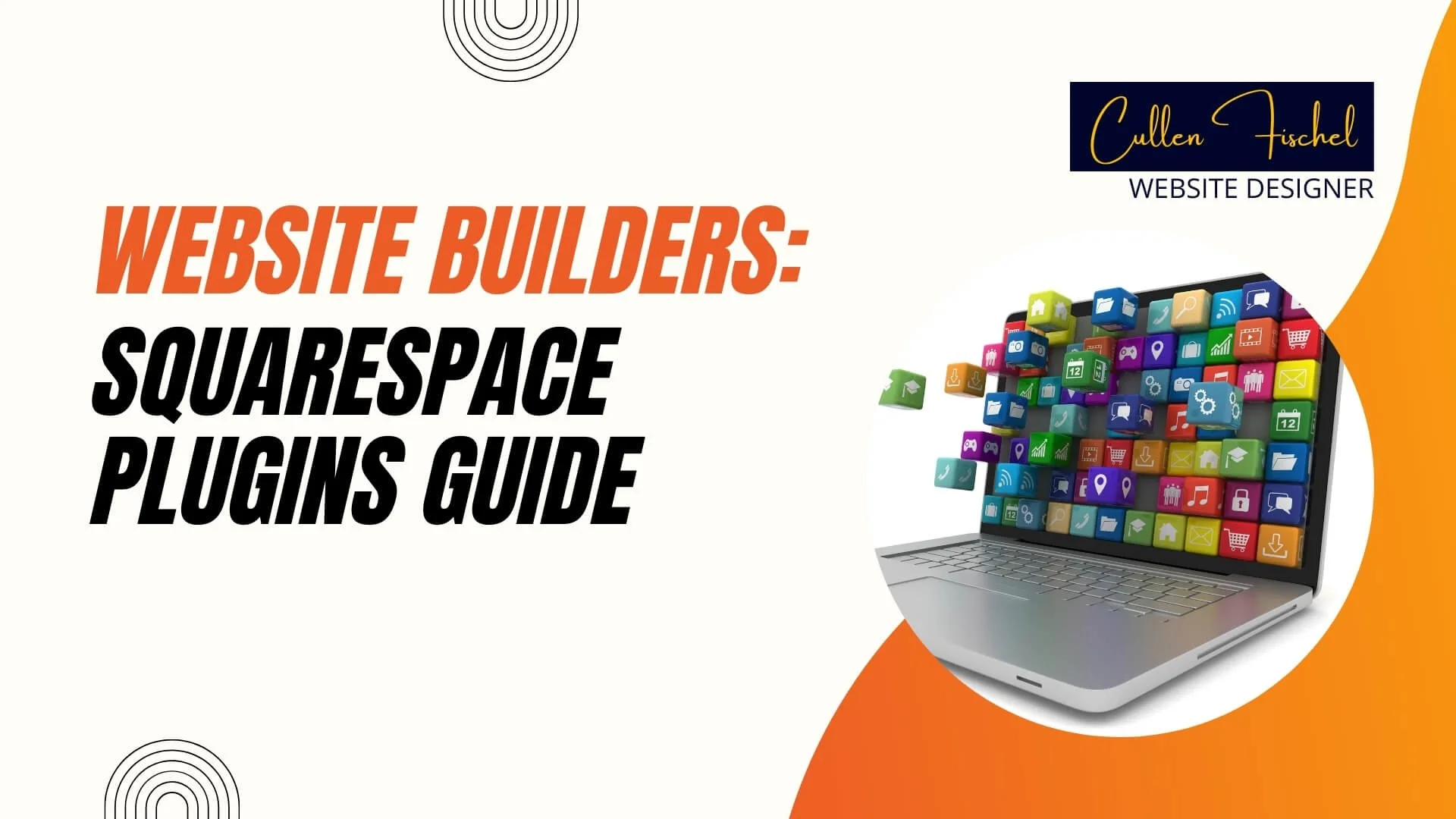Webflow vs. Squarespace: A Detailed Comparison
Webflow vs. Squarespace: A Detailed Comparison
Discover the key differences between Webflow and Squarespace in this comprehensive guide by Cullen Fischel. Perfect for businesses exploring the best web design solutions.
Cullen Fischel | FEBRUARY 12, 2024 | 5 min. read
5 minute read
By Cullen Fischel, website designer
Just like in the rest of the world, there’s a strong demand in Cleveland, Ohio for straightforward, powerful website building platforms.
Today, I'm diving into a detailed comparison between two giants in the website building arena: Webflow and Squarespace.
This comparison aims to arm you, whether you're a business owner or a marketer, with the knowledge to choose the right platform that aligns with your marketing tactics and design aspirations.
Key Takeaways
Webflow excels in providing advanced design flexibility and customization, catering to users with a knack for detailed, unique web designs.
Squarespace is celebrated for its ease of use and offers a streamlined approach to website building, making it ideal for beginners and small businesses.
Both platforms have their pros and cons, depending on your specific needs, such as pricing, e-commerce capabilities, and design requirements.
Design and Customization: A Core Differentiator
When it comes to design and customization, Webflow stands out with its powerful responsive design features, allowing for intricate animations and interactions without needing to write code.
This level of detail enables creators to craft websites that perfectly adapt to any device. However, the advanced capabilities come with a learning curve, potentially making Webflow more daunting for beginners.
Squarespace, on the other hand, provides a more accessible route to website creation. With a wide array of free templates that are easy to customize, it offers a balance between simplicity and design.
While you might not achieve the same level of uniqueness as with Webflow, Squarespace ensures that beginners can still create visually appealing websites with minimal effort.
Pricing: Considering Long-term Value
Pricing plays a crucial role in the decision-making process. Webflow offers a range of plans catering to different needs, from basic sites to comprehensive e-commerce solutions. Its free plan, albeit restrictive, provides a taste of what the platform can do.
Squarespace, known for its value for money, provides competitive pricing, especially for e-commerce functionality, making it an attractive option for small to medium-sized businesses looking to maximize their investment.
E-commerce Capabilities
Webflow and Squarespace both offer e-commerce solutions, but they cater to different levels of business needs. Webflow provides a more granular control over your online store's design and functionality.
It allows for custom shopping experiences, integration with various payment gateways, and advanced e-commerce analytics. However, this comes at a higher price point, especially as your store grows.
Squarespace, on the other hand, is seen as more cost-effective for e-commerce, especially for small to medium-sized businesses.
It offers a straightforward setup process for online stores, with features like unlimited products, accounts, and a suite of marketing tools included even in its lower-tier plans. Squarespace’s simplicity and all-in-one package can be especially appealing for those who prioritize ease of use over extensive customization.
SEO
When it comes to Search Engine Optimization (SEO), both platforms have their strengths. Webflow is known for giving users more control over SEO settings, including on-page content, meta titles and descriptions, alt tags, and more.
It also allows for the creation of highly customized, SEO-friendly URLs. This level of control can be crucial for businesses aiming to fine-tune their SEO strategy.
Squarespace also offers a robust set of SEO tools that are more than sufficient for most users. While it may not offer as much customization as Webflow, it covers all the basics well, such as sitemap generation, automatic tagging, and clean URL structures.
Squarespace’s simplicity in configuring SEO settings can be a significant advantage for those who prefer a more straightforward approach.
Community Support and Learning Resources
Webflow boasts a vibrant community of designers and developers, with a wealth of learning resources available through Webflow University.
This includes comprehensive tutorials, forums, and template customization guides, making it an excellent platform for those who like to learn and solve problems through community engagement.
Squarespace provides solid customer support with 24/7 access via email and live chat, in addition to a thorough knowledge base and community forums.
While Squarespace’s support is highly rated, the nature of its platform as a more straightforward, less customizable tool may result in fewer opportunities for community-driven innovation compared to Webflow.
Cullen Fischel's Tips for Success
Evaluate your design needs: If your project requires deep customization and unique designs, Webflow might be worth the learning investment. For simpler projects or if ease of use is a priority, Squarespace could be more suitable.
Consider your budget: Analyze the total cost of ownership, including any add-ons or third-party services you might need. Squarespace's all-inclusive approach can be more cost-effective for some businesses.
Plan for scalability: Think about where you see your website in the next few years. Webflow's scalability might be necessary for complex projects or growing e-commerce sites.
Ask a Website Designer
How Important Is Design Flexibility in Choosing a Platform?
Design flexibility is paramount for businesses aiming for a standout online presence. Webflow's robust design capabilities offer the freedom to bring any vision to life, making it a preferred choice for those with specific design ambitions. However, for many small businesses, Squarespace's range of professionally designed templates provides ample opportunity to create an attractive, functional website with less effort and time investment.
Is Squarespace Suitable for E-commerce Startups?
Absolutely. Squarespace has carved out a reputation for being particularly friendly to e-commerce startups, offering a range of features that are both powerful and easy to use. Its competitive pricing for e-commerce plans makes it an appealing choice for businesses looking to get off the ground without hefty initial investments.
Can Webflow Be Used By Beginners?
While Webflow is geared more towards users with a background in web design, it doesn't exclude beginners. Thanks to resources like the Webflow Academy, newcomers can gradually build up their skills and take advantage of the platform's advanced features. It's about balancing the desire for design freedom with the willingness to climb the learning curve.
The choice between Webflow and Squarespace hinges on a clear understanding of your business's needs, your comfort with web design, and your long-term goals.
Both platforms offer compelling benefits, but aligning their strengths with your requirements will ensure you select the best tool for your online journey.
Whether you're crafting the next standout e-commerce platform or a stunning portfolio to showcase your work, choosing the right website builder is a critical step toward realizing your digital marketing objectives.




